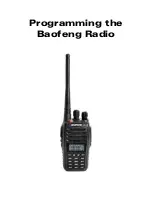
Page 46 of 90
CCT24
StaticNetAddr
- this parameter holds the lower byte of the system address of a remote. Assigning a value
other than 0xFF provides a fixed (static) address. When this parameter is set to 0xFF, the router assigns
the lower byte of the system address to a remote dynamically. When using fixed network addressing, any
device that can connect to a parent that has any children with fixed network addresses must also have a
unique fixed network address,
including child routers
.
HeartbeatIntrvl
- this parameter sets the interval that heartbeat status messages are sent from each
system radio. Status messages include the node’s parent’s
BaseModeNetID
, its own routing address, and
miscellaneous performance data. The default value for this parameter is 20 seconds. If the heartbeat
interval is set to 0x0000, remote heartbeats are disabled. Since router heartbeats are needed to maintain
the system routing table, setting the
HeartbeatIntrvl
value on a router to 0x0000 will cause heartbeats to
be sent at the default 20 second rate. Setting the
HeartbeatIntrvl
parameter to 0xFFFF will suppress
heartbeats except during registration or when an error is detected in the routing table.
The base maintains a 2-bit counter for each router in the system. The counter is decremented at the
base’s heartbeat interval. If the base does not receive a heartbeat packet from a router for two to three
heartbeat intervals, that router and all of its child routers (and their child routers, etc.) are deleted from the
routing table. It is possible to set the base’s heartbeat interval to a value greater than the heartbeat inter-
val for all the other devices in the network, to prevent premature router timeouts due to network conges-
tion causing heartbeats from routers to be delayed or lost.
The base treats router heartbeat packets differently than remote heartbeat packets. Heartbeat packets
from remotes are not ACKed, while ACKs are sent to a routers originating a heartbeat packets to indicate
reception. This prevents additional heartbeat transmissions by a router until the next heartbeat interval. If
a router does not receive a reply to a heartbeat packet within the configured
P2PReplyTimeout
interval, it
will persistently re-send the heartbeat packet until its is ACK’ed.
TreeRoutingSysID
- this parameter holds the system ID for a tree-routing system.
EnableRtAcks
- this parameter controls remote ACK replies for peer-to-peer data packets. The default
configuration for this parameter is 0, which suppresses remote peer-to-peer ACKs. Setting this parameter
to 1 enables peer-to-peer ACKs. This parameter applies to both point-to-multipoint and tree-routing peer-
to-peer communications.
4.2.2 Bank 1 - System Settings
Size in
Bank
Loc'n
Name
R/W
bytes
Range
Default; Options
0x01
0x00
FrequencyBand
R/W
1
0..FF
0x00
to 0x08 = general purpose,
0x04,
0x05 & 0x07 = France, 0xFF = auto
0x01
0x01
AccessMode
R/W
1
0..4
2 = TDMA Dynamic Slots
0x01
0x02
BaseSlotSize
R/W
1
6..233
50 bytes
0x01
0x03
LeasePeriod
R/W
1
0..250
5 s
(0 to disable)
0x01
0x04
ARQ_Mode
R/W
1
0..3
1 = redundant broadcast to
ARQ_AttemptLimit
,
ARQAttemptLimit
pass to remotes enabled
0x01
0x05
ARQ_AttemptLimit
R/W
1
0..63
8 attempts
0x01
0x06
MaxSlots
R/W
1
0..15
4 slots
0x01
0x07
CSMA_Predelaty
R/W
1
0..255
0x03
0x01
0x08
CSMA_Backoff
R/W
1
0..255
0x0A
0x01
0x09
MaxPropDelay
R/W
1
0..255
0x45
(20 mi, 32.18 km)
0x01
0x0A
LinkDropThreshold
R/W
1
0..255
0x0C
0x01
0x0B
CSMA_RemtSlotSize
R/W
1
1..255
64
0x01
0x0C
CSMA_BusyThreshold
R/W
1
1..255
20
0x01
0x0D
RangingInterval
R/W
1
0..255
0
= disable
0x01
0x0E
AuthMode
R/W
1
0..3
0
= authentication disabled
0x01
0x0F
P2PReplyTimeout
R/W
1
16
hops
















































